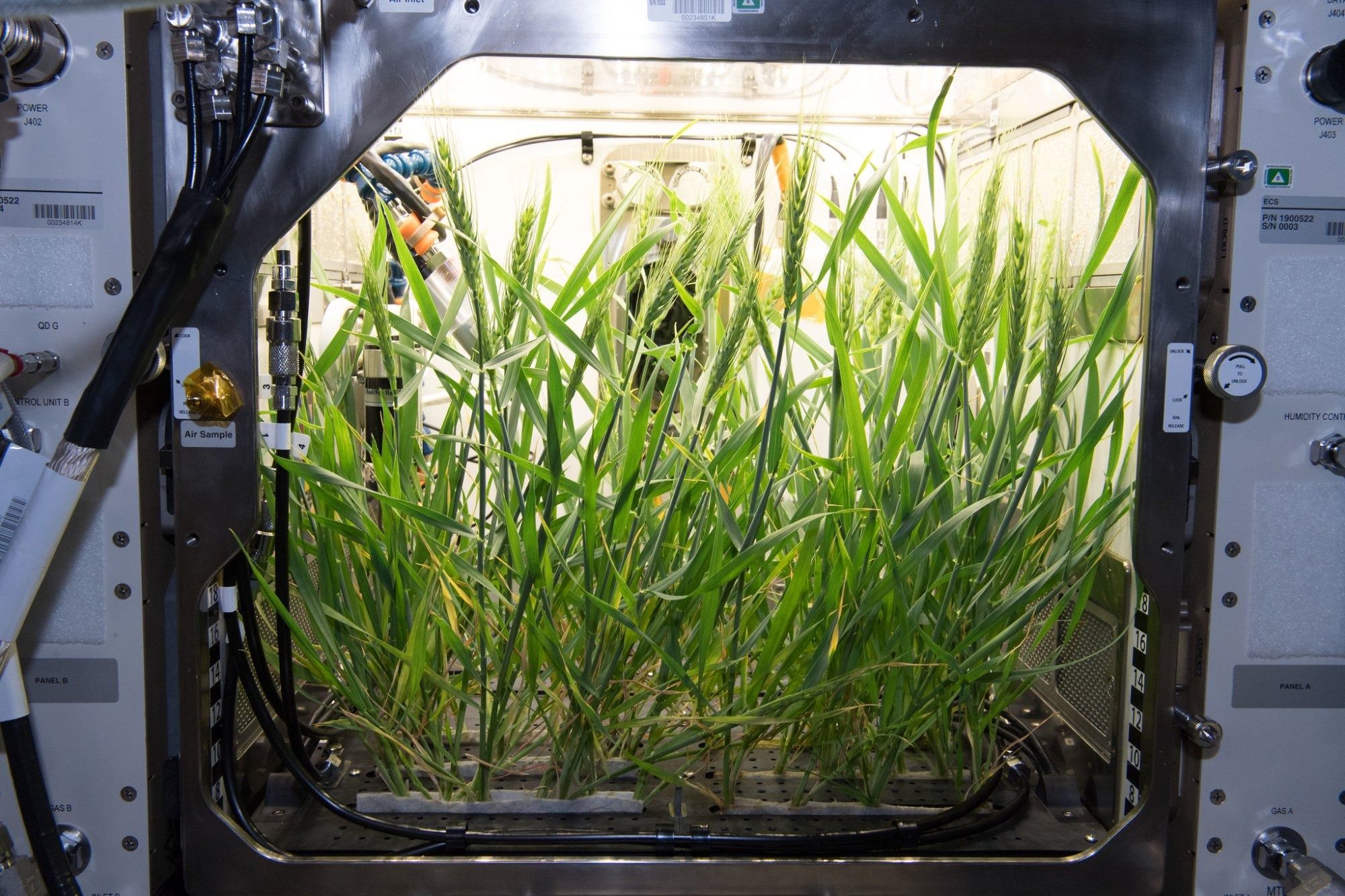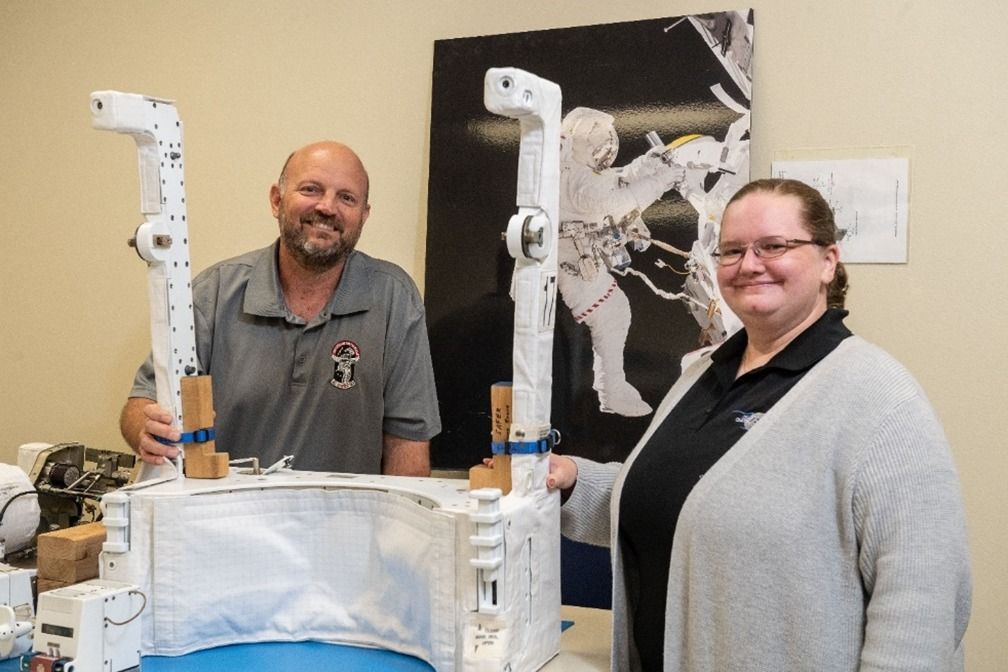Orbiting 250 miles above Earth, the International Space Station (ISS) is humanity’s home in space and houses astronauts to conduct scientific research and observations. With all of the difficulties, excitement, and strangeness, what do astronauts do day to day?
ISS Has Executed Over 3,000 Experiments
The ISS serves as the home and laboratory of astronauts in space for the duration of their mission—which you can track and see for yourself. There have been over 3,000 investigations conducted in the ISS over the years, in partnership with many countries across the world.
One of the goals of their studies is to understand the effects of long-duration space flight on the human body, as well as advancements in medicine. Some of these experiments have even improved drugs and cancer treatments, helped develop air purification and water filtration products, and Earth observation from the ISS has also helped with disaster relief.
Microgravity is a condition where objects appear weightless.
Astronauts Grow Vegetables on the ISS
Did you know that gardening is possible inside the ISS? Astronauts have already successfully grown lettuce, mustard greens, chili peppers, and radishes in space and even eaten them. Gardening not only provides fresh food for astronauts but also contributes to our understanding of plant growth in microgravity, which will be useful when we decide to colonize another planet.
The ISS has been continually serving humanity by providing scientists and researchers a place to conduct groundbreaking experiments and studies, further expanding human knowledge. This also includes growing edible raw materials for human food in preparation for future Mars and other long-duration missions.
The first growth test of crops using arabidopsis seeds in the ISS
The first food ever eaten in space was a beef and liver paste from a tube that Yuri A. Gagarin—the first human in space, ate in 1961 aboard his Vostok capsule. This along with some chocolate sauce.
Astronauts Exercise 2.5 Hours a Day
A day in an astronaut’s life at the ISS is packed with tasks from maintenance of life-support systems to supervising scientific experiments. But did you know that they also have to exercise for 2.5 hours every day? That’s right, 2.5 hours—looks like even astronauts can’t skip a day at the gym. They have an intensive exercise regimen to offset the muscle and bone density loss they experience due to microgravity.
The way astronauts exercise on the ISS is by getting harnessed to a treadmill (to stay in place while running) and foot clips for stationary bikes. To simulate weightlifting, they use the Advanced Resistive Exercise Device (ARED) that uses vacuum cylinders to provide resistance.
Astronauts Experience 16 Sunsets a Day
One of the perks of being an astronaut is being able to view our planet Earth from a very different perspective. Astronauts get to experience 16 sunrises and sunsets each day, as the ISS orbits Earth at a mind-boggling speed of 17,500 mph, going around every 90 minutes. That sounds like a truly surreal experience for astronauts.
The Cupola, a dome-shaped observation module on the ISS, allows astronauts to take a panoramic view of space and Earth. Aside from having that privilege, it’s also a place to monitor astronauts during spacewalks.
The Cupola, developed by NASA.
Spacewalks Can Last Up to 8 Hours
Spacewalking isn’t a simple walk in the park. Officially known as Extravehicular Activity or EVA, spacewalking is one of the most exhilarating tasks an astronaut can participate in, but it’s not without risks.
Harmful radiation, vacuum, and extreme temperatures are just some of the dangers pressurized space suits have to overcome to protect astronauts from spacewalks that can last up to 8 hours.
Astronauts “walk” outside the ISS with safety lines always tethered to them at all times to perform their tasks. Essential work like maintenance of the ISS or upgrades are carried out and may include installing new solar panels, attaching newly developed technology, or repairing certain equipment that is vital to the health of the ISS.
Since safety is of paramount importance for astronauts working in outer space, they wear SAFER backpack systems, along with the safety tether, as a backup for emergencies that allow them to maneuver their way back to the space station. Rigorous preparations have been carried out by these astronauts on Earth for this sole purpose. They train at the Neutral Buoyancy Lab (NBL) of NASA to simulate weightlessness, training underwater for many hours.
SAFER, a self-contained backpack system worn during spacewalks outside ISS.
Astronauts spend 5–7 times longer training in the NBL for each planned EVA.
Astronauts Experiment With 3D Printing
3D printing experiments done in space have shown some progress in recent years. In fact, the first 3D printer was sent to the ISS in 2014. This initiative brings hope when it comes to solving supply issues during long space journeys. If a replacement part is needed during a space mission, astronauts may be able to just print it using a 3D printer.
Another useful application of this is bioprinting. LamdaVision, a biotech company, is trying to develop the first protein-based artificial retina to restore vision for the blind or visually impaired. They are working on this on the ISS since microgravity can help with the layering of the proteins and polymers, which can be potentially groundbreaking and lead to treating retinal degenerative diseases and more.
Astronauts Work With Robots and AI
NASA developed three cube-shaped robots named Honey, Queen, and Bumble (also referred to as the Astrobee system) to help astronauts be more efficient and support research on the ISS.
They have been operational since 2019 and can operate autonomously (or be remotely controlled) perform inventory management, document experiments, and help with the maintenance of machines. These robots are expected to play an essential role in taking care of spacecraft for future deep space missions when astronauts are absent.
One cool thing about the Astrobee system is that it uses AI to autonomously perform tasks around the ISS, and includes cameras and sensors to navigate around the ISS without direct human assistance. These robots are also able to detect radiation and carbon dioxide and collect data autonomously.
Microgravity Isn’t All Fun and Games
Though this one isn’t necessarily a cool thing that astronauts do in space, it really highlights how much they go through when working at the ISS.
Astronauts encounter significant physical health challenges due to microgravity while living and working in space. This includes both muscle and bone loss. When astronauts get back to Earth, they can’t stand on their feet right away and usually need time to adjust to gravity again. If they’ve been in space for a long time, it can be weeks before they’re on their feet again.
But that’s just the beginning of how microgravity can affect the human body. Astronauts experience accelerated aging of disease, worsening eyesight, and skin rashes. When it comes to bone loss, they become 1% less dense for every month spent in space (if you don’t have a rigorous exercise routine).
A former NASA astronaut, Dr. Sandy Magnus, once described the feeling of launching into space after being asked by a child. Sandy said it felt like having a “70-pound gorilla sitting on your chest.” This feeling is the powerful g-force that astronauts feel when launching from Earth. You can even watch some space launches soon.
Being an astronaut and working out of the ISS can be both physically and mentally demanding. The work can be intense, and the conditions of space don’t really make it any easier. Living together with just a number of people in a confined space away from friends and family eventually takes its toll. Fortunately, video calls are possible from the ISS.
Astronauts help provide humanity with valuable knowledge that can further push our boundaries not just in space, but also on Earth as well—and they get to do some pretty cool things while doing it. There are also a number of things that we wouldn’t have if it weren’t for space travel.









